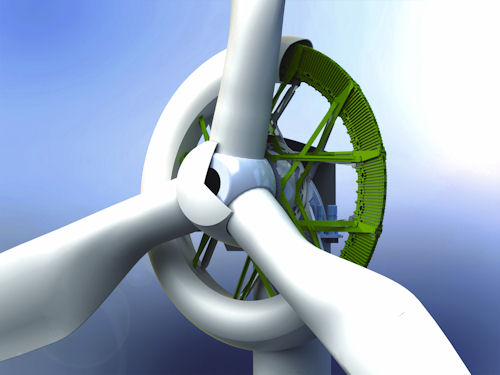Fast App: Taming the Wind
Cobham Technical Services and Boulder Wind Power collaborate to accelerate the development of a revolutionary wind turbine technology.
Latest News
December 14, 2012
By Cobham Technical Services
Aurora, Ill.-based Cobham Technical Services is helping Colorado’s Boulder Wind Power (BWP) accelerate development of a radical new permanent magnet generator through use of advanced electromagnetic design software. Based on a permanent magnet, direct-drive design, BWP’s generator uses an exclusive axial flux, air-core architecture that increases efficiency and reliability, and is believed to ultimately reduce the cost of wind-generated electricity to compete at parity with fossil fuels.
 |
| Boulder Wind Power is using Opera electromagnetic design software to accelerate development of its revolutionary permanent magnet generator technology for wind turbines. |
In support of the initial engineering studies taken on at the company’s formation in early 2010, BWP chose to use the 3D version of the Opera electromagnetic simulator from the Vector Fields Software range of Cobham Technical Services. BWP cites the software’s accuracy, the ease with which its analytical capabilities can be adapted to suit specific requirements, and Cobham’s willingness to collaborate in further developing key areas such as dynamic modeling as the primary factors behind its choice.
How It Works
Like all permanent magnet direct-drive wind turbines, the generator rotor of BWP’s 3.0MW design turns at about 13 rpm, necessitating a high pole count. Opera’s advanced solvers allow high periodicity to be leveraged, so that the analytical model can be a fraction of the size of the complete generator “significantly reducing simulation times. This is particularly important for BWP because it makes exclusive use of the 3D version of Opera, which is necessarily more computationally demanding than the 2D version. While many wind turbine designers employ 2D simulation for the main components in a generator, and only use 3D simulation for elements such as the end turns on windings, BWP’s designers must use full 3D simulation at every stage, to model the generator’s novel architecture as accurately as possible.
“The physics engine and computational solvers in Opera-3D provide an excellent foundation for the detailed analyses that we perform for our design optimization,” notes Brian Sullivan, principal electromagnetics engineer at BWP. He adds that, combined with Opera’s extensive and flexible scripting capabilities, “this software is enabling us to develop new analytical techniques for our unique machine architecture. In addition, the results obtained from prototype testing have shown a high degree of correlation with our analyses, demonstrating the accuracy of the software.”
For example, Sullivan says, BWP’s predictive models for open circuit voltage in Opera were within 2% of measured data. “We are now working with Cobham to build on these exceptional results by enhancing dynamic and transient modeling capabilities, which will enable us to take the next big step in accelerating our design analysis and optimization,” he says.
Design Innovation
Unlike conventional permanent magnet generators, the air-core stator in the BWP design does not use electrical steel laminations wound with conductors, and contains no ferromagnetic materials. This breakthrough has several advantages, including eliminating iron losses associated with flux reversals in the stator and eliminating the magnetic attraction between the generator’s rotor and stator. Together, these enable higher efficiencies and higher torque levels for a given mass of generator.
“Having proven the fundamental design approach for our generator and validated our design tools, we are now in the process of designing units to be incorporated in our clients’ multi-megawatt wind turbine designs for prototype testing,” reports BWP CEO Andris Cukurs. “We believe our technology will provide wind turbine manufacturers with the innovative design advantages they are looking for to better compete in the global wind market.”
Kevin Ward, director of Cobham Technical Services - Vector Fields Software, points out that wind power is at a critical point of development.
“Wind turbines currently account for about 5% of the world’s installed capacity for electricity generation, providing ample opportunity for growth,” he says. “We are delighted to be working with BWP to help them develop this highly innovative generator, which is being designed to make the future of wind power more accessible.”
BWP’s generators will be available for testing in prototype turbines this year, with full commercial availability expected in 2014.
Subscribe to our FREE magazine, FREE email newsletters or both!
Latest News
About the Author
DE’s editors contribute news and new product announcements to Digital Engineering.
Press releases may be sent to them via [email protected].






